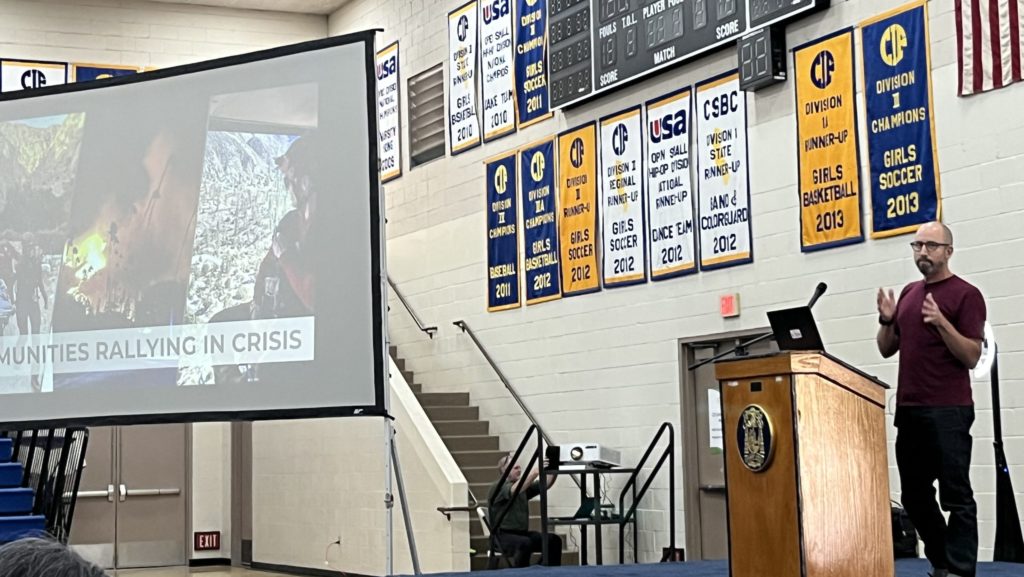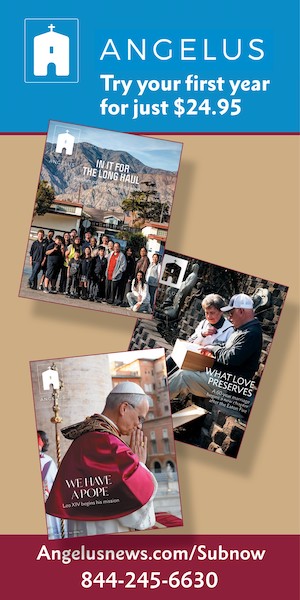When Pete Mauro saw his Altadena community burning in the Eaton Fire in January, he saw and felt the anxiety that many of his friends and neighbors were experiencing.
Were their homes alright? Were they burned to the ground? When could they get back to see the devastation?
Mauro wanted to figure out a way to help, and with his technology background, he and other volunteers created AltadenaRising.org, a site that captured about 25,000 photographs of homes in Altadena following the fire, allowing residents and others to see the condition of their homes. When it came time for recovery and healing, Mauro helped turn the site into a place where people could submit stories, photos, and reflections about homes and places around the city.
“The idea was leave a little tribute about your friend’s house, or your favorite restaurant that burned down, or your favorite hiking trail,” he said. “And kind of remember that. And through that process, start to heal, but also create a record.”
Mauro was the keynote speaker for the annual C3 Conference, the two-day technology-focused event on Aug. 5-6 that helps hundreds of educators, catechists, and faith leaders in the Archdiocese of Los Angeles to embrace tech knowledge and empower them to use it to better equip their students.
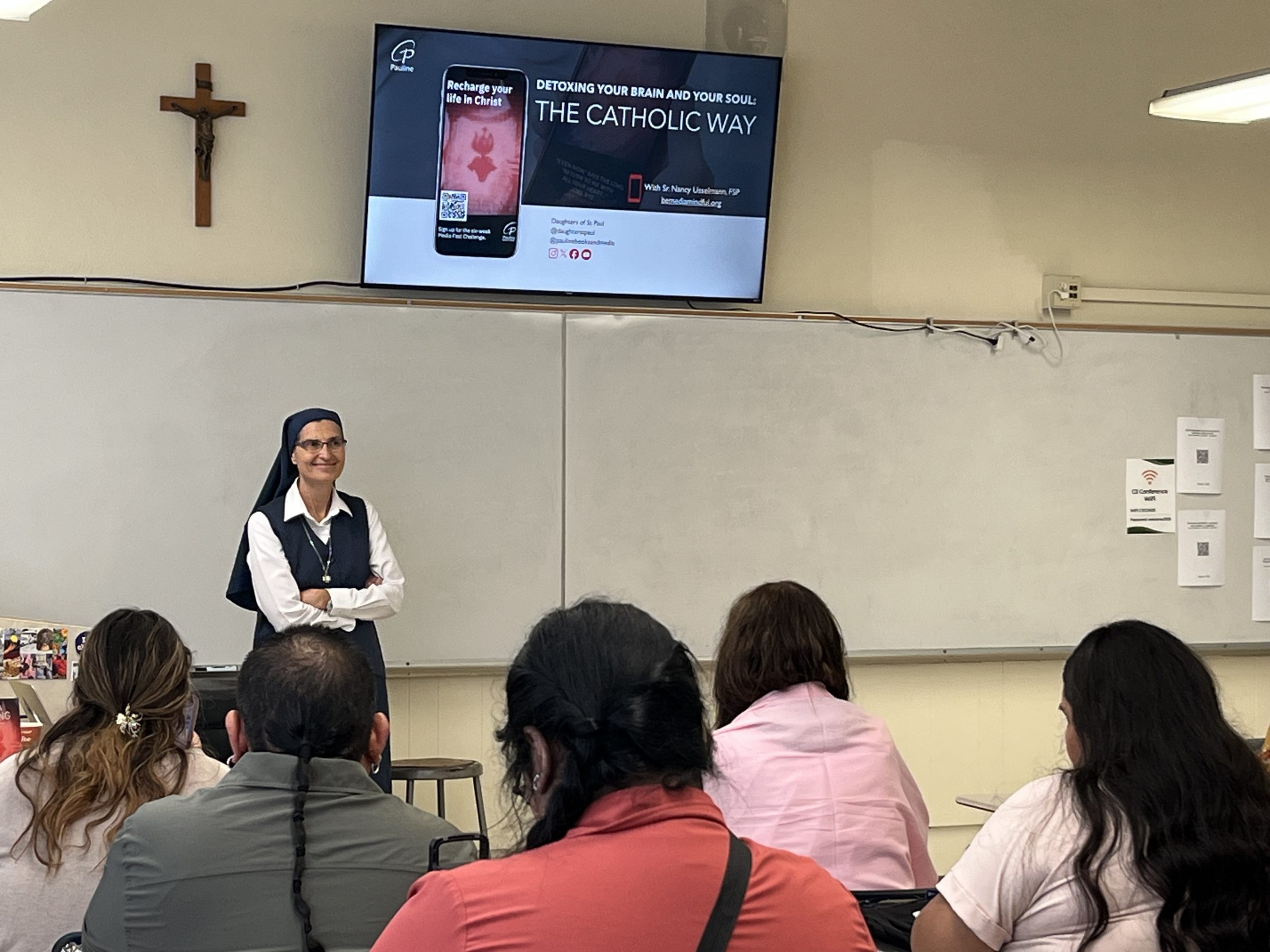
For C3 organizers, January is typically when things start getting into gear for planning the upcoming event, but the wildfires wreaked havoc on Southern California, forcing everyone to focus on their affected communities.
So when it came time to regroup and think about a keynote speaker, what better way to focus on technology and honor those who suffered through the devastation than to invite an Altadena resident who used tech tools to inspire healing in his fire-ravaged community.
“Anyone can make a small step that has a ripple effect, and maybe there’s something that you’re really good at, you have a superpower, and just taking that first step could really have an impact you may not be able to imagine,” Mauro said.
Taking a step forward — or for some, very small ones — is the goal every year for the conference, said C3 Project Manager Paul Hernandez, getting those wary of technology to get more comfortable, or having those who are proficient go the extra mile to help others, maybe even become a presenter. In fact, that was the theme for this year: “Navigating Forward.”
“The term navigating has also become in a very clear way a way of describing what we do when we are online,” Auxiliary Bishop Brian Nunes said during the conference’s opening prayer. “We may surf the web, but that sounds more like a casual way to spend our time. Navigating is more serious, like there's a goal in mind, but also challenges.”
As artificial intelligence continues to be on the minds of educators and students alike, the 2025 C3 Conference was the culmination of a three-year effort to get people talking about AI, its potential uses, and its challenges.
“We’re not afraid of it, so that’s the growth,” Hernandez said. “But AI itself has not changed. It’s still there. People are understanding it a little bit better. We’re trying to help them.
“I think our approach is more let’s just understand what it is and how you can use it as a tool and not be afraid of it.”
More than 20 of the 150-plus English and Spanish-language workshops offered at the conference had “AI” in the name, with bundles more hinting at or outright discussing the future of artificial intelligence.
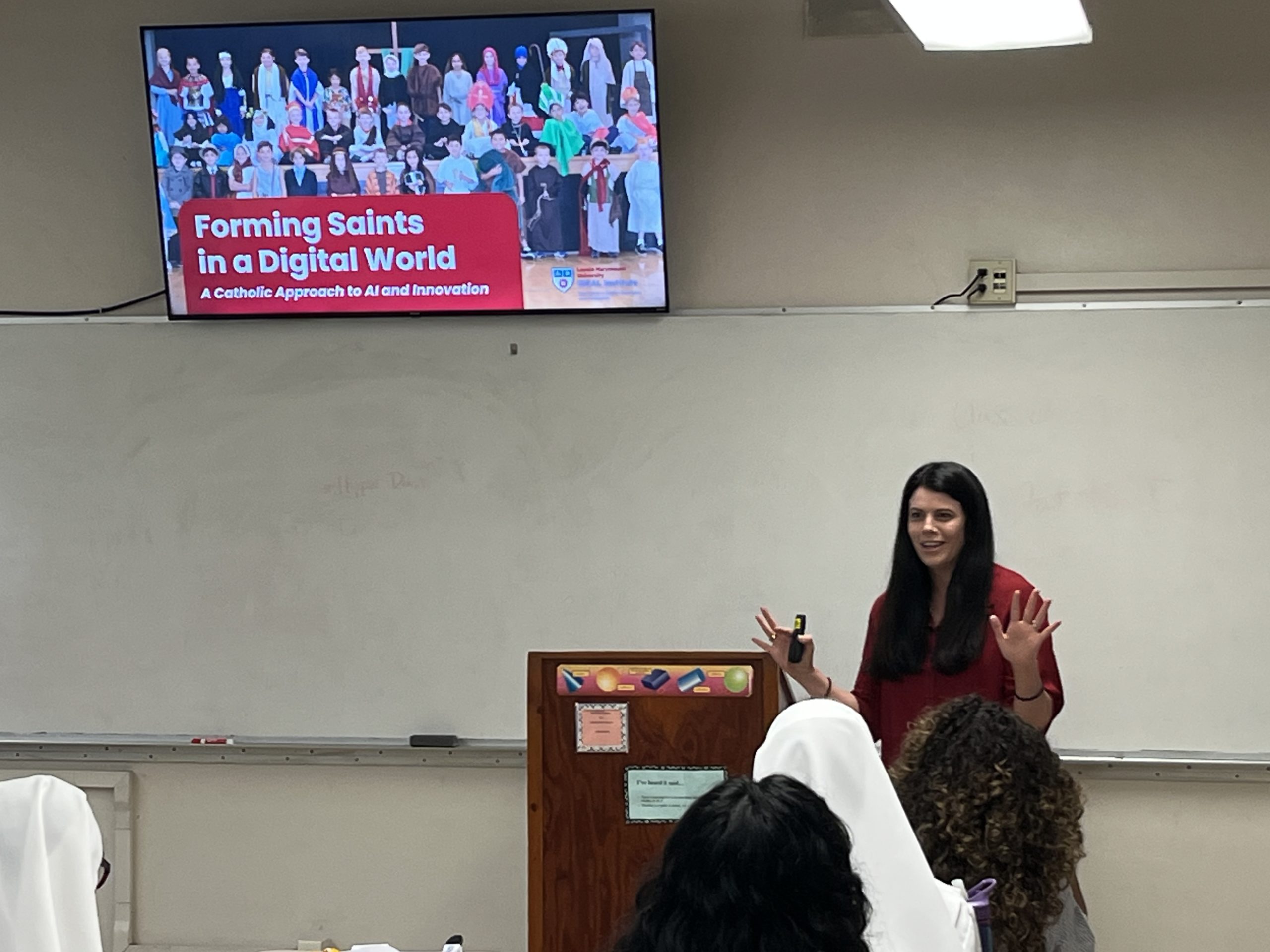
Take Meaghan Crowley-Sullivan and Amy Gross, both coming from the Innovation in Digital Education and Leadership (iDEAL) Institute at Loyola Marymount University. The pair hosted a couple of workshops dealing with the Catholic approach to AI and the push to provide guidance to students on Christ-centered usage.
“We want to promote AI in service of others, in service of learning, in service of doing better in the world,” Crowley-Sullivan told attendees. “We also deeply encourage students to think about the right questions: How does AI make decisions? Who benefits? Who could be harmed? What is truth in this new world?”
“It’s our job as Catholic teachers, Catholic parents, Catholic educators in general, to support our students in becoming these digital disciples,” Gross said.
Tackling the AI issue was a big help for Isamar Ramos, a teacher at Our Mother of Good Counsel Catholic School in Los Feliz. Ramos’ challenge is matching what she’s teaching her students with the real-world expectations that AI might bring.
“It’s exciting, but it’s also scary,” said Ramos, who teaches first and second grade. “I think there’s a lot of debate on school not aligning with the economy or with school not having the skills to prepare students for the real world, and I like to be a bridge for that. But I have to be proactive as an educator.”
Other workshops focused on technology concepts such as digital timesavers, 3D printing, eSports, and Google tools.
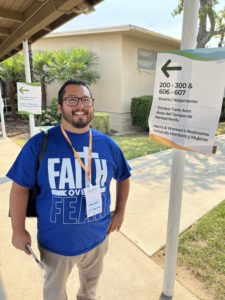
A session by Sister Nancy Usselmann, FSP, titled “Detoxing Your Brain and Your Soul — the Catholic Way,” was one of several helping attendees overcome the addictive and overwhelming nature of constantly staring at screens.
“The Church always talks about these technologies as gifts from God,” said Usselmann, the director of Pauline Media Studies. “They’re not evils. Yet we have to ask: What are we doing and why are we doing it? Why are we engaging with this, and what is it taking the place up in our lives?
“They keep us sometimes distracted from what’s really important in life.”
Antonio Abner, a seventh-grade teacher at St. Joseph School in La Puente, worries about that effect on his tween students.
“I have students that were on the internet by the time they were 3 years old,” Abner said. “And in that way, they are leaps and bounds ahead of my understanding. But also at 12 years old, 13 years old, making sure that they’re doing it in a way that’s responsible and safe, while also learning some of these newer technologies, how to implement it in writing, mathematics, all that good stuff.”
Hernandez is proud of the way they’ve streamlined the conference to tackle what could be intimidating technology subjects, but presenting them in functional ways that keep people consistently coming back year after year.
“It’s hard to be able to tackle such a subject as vague as technology is, and then have usable resources and actions and explanations of how they all work, so that you could literally start using it tomorrow, or when you’re on the way home,” he said. “So I think that’s where we have our biggest success.”
